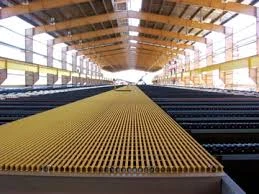
-
 Afrikaans
Afrikaans -
 Albanian
Albanian -
 Amharic
Amharic -
 Arabic
Arabic -
 Armenian
Armenian -
 Azerbaijani
Azerbaijani -
 Basque
Basque -
 Belarusian
Belarusian -
 Bengali
Bengali -
 Bosnian
Bosnian -
 Bulgarian
Bulgarian -
 Catalan
Catalan -
 Cebuano
Cebuano -
 China
China -
 China (Taiwan)
China (Taiwan) -
 Corsican
Corsican -
 Croatian
Croatian -
 Czech
Czech -
 Danish
Danish -
 Dutch
Dutch -
 English
English -
 Esperanto
Esperanto -
 Estonian
Estonian -
 Finnish
Finnish -
 French
French -
 Frisian
Frisian -
 Galician
Galician -
 Georgian
Georgian -
 German
German -
 Greek
Greek -
 Gujarati
Gujarati -
 Haitian Creole
Haitian Creole -
 hausa
hausa -
 hawaiian
hawaiian -
 Hebrew
Hebrew -
 Hindi
Hindi -
 Miao
Miao -
 Hungarian
Hungarian -
 Icelandic
Icelandic -
 igbo
igbo -
 Indonesian
Indonesian -
 irish
irish -
 Italian
Italian -
 Japanese
Japanese -
 Javanese
Javanese -
 Kannada
Kannada -
 kazakh
kazakh -
 Khmer
Khmer -
 Rwandese
Rwandese -
 Korean
Korean -
 Kurdish
Kurdish -
 Kyrgyz
Kyrgyz -
 Lao
Lao -
 Latin
Latin -
 Latvian
Latvian -
 Lithuanian
Lithuanian -
 Luxembourgish
Luxembourgish -
 Macedonian
Macedonian -
 Malgashi
Malgashi -
 Malay
Malay -
 Malayalam
Malayalam -
 Maltese
Maltese -
 Maori
Maori -
 Marathi
Marathi -
 Mongolian
Mongolian -
 Myanmar
Myanmar -
 Nepali
Nepali -
 Norwegian
Norwegian -
 Norwegian
Norwegian -
 Occitan
Occitan -
 Pashto
Pashto -
 Persian
Persian -
 Polish
Polish -
 Portuguese
Portuguese -
 Punjabi
Punjabi -
 Romanian
Romanian -
 Russian
Russian -
 Samoan
Samoan -
 Scottish Gaelic
Scottish Gaelic -
 Serbian
Serbian -
 Sesotho
Sesotho -
 Shona
Shona -
 Sindhi
Sindhi -
 Sinhala
Sinhala -
 Slovak
Slovak -
 Slovenian
Slovenian -
 Somali
Somali -
 Spanish
Spanish -
 Sundanese
Sundanese -
 Swahili
Swahili -
 Swedish
Swedish -
 Tagalog
Tagalog -
 Tajik
Tajik -
 Tamil
Tamil -
 Tatar
Tatar -
 Telugu
Telugu -
 Thai
Thai -
 Turkish
Turkish -
 Turkmen
Turkmen -
 Ukrainian
Ukrainian -
 Urdu
Urdu -
 Uighur
Uighur -
 Uzbek
Uzbek -
 Vietnamese
Vietnamese -
 Welsh
Welsh -
 Bantu
Bantu -
 Yiddish
Yiddish -
 Yoruba
Yoruba -
 Zulu
Zulu
GRP Piping System - Durable, Flexible, and Cost-Effective Solutions
Understanding GRP Piping Systems
Glass Reinforced Plastic (GRP) piping systems have emerged as a preferred choice for various industrial applications, owing to their superior properties and benefits. Unlike traditional materials such as steel or PVC, GRP combines the strength of fiberglass with the flexibility of plastics, resulting in a piping system that boasts durability, corrosion resistance, and lightweight characteristics.
Understanding GRP Piping Systems
Another key benefit of GRP piping systems is their lightweight nature. Compared to traditional materials, GRP is considerably lighter, making it easier to transport and install. This feature allows for quicker installation processes, thereby reducing labor costs and minimizing disruption to ongoing operations. The ease of handling GRP pipes often leads to a more flexible design, enabling engineers to execute complex layouts with less effort.
grp piping system

Moreover, GRP piping systems exhibit excellent thermal insulation properties. The material inherently reduces heat loss or gain, making it an ideal choice for temperature-sensitive applications. This property is particularly beneficial in industries such as water treatment and chemical processing, where temperature control is crucial for maintaining system efficiency.
GRP pipes also have a smooth internal surface, which significantly reduces friction and enhances flow characteristics. This feature contributes to lower energy costs when pumping fluids through the system, as less energy is required to maintain desired flow rates. Additionally, the smooth surfaces minimize the buildup of sediment and scaling, further enhancing system performance and longevity.
Despite their numerous advantages, it's important to address some considerations when choosing GRP piping systems. While they are generally resistant to impact and has good mechanical properties, GRP can be more susceptible to UV radiation exposure, which might require protective coatings in outdoor applications. Furthermore, the initial cost of GRP piping can be higher compared to conventional materials, though the long-term savings often outweigh this initial investment.
In conclusion, GRP piping systems represent an innovative solution suitable for a wide array of industrial applications. Their corrosion resistance, lightweight structure, excellent thermal insulation, and favorable flow characteristics make them an attractive alternative to traditional piping materials. As industries continue to evolve and require efficient, durable solutions, the adoption of GRP technology is likely to increase, marking a significant advancement in piping systems.









